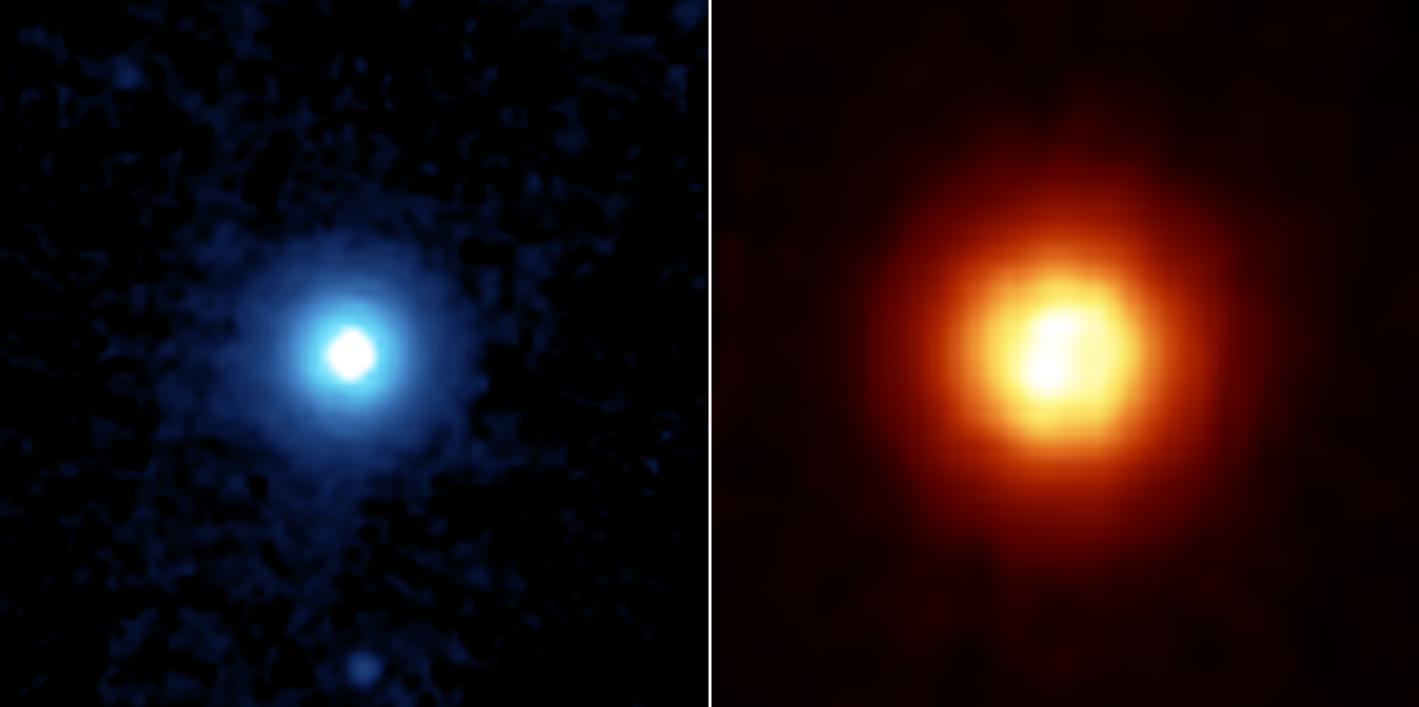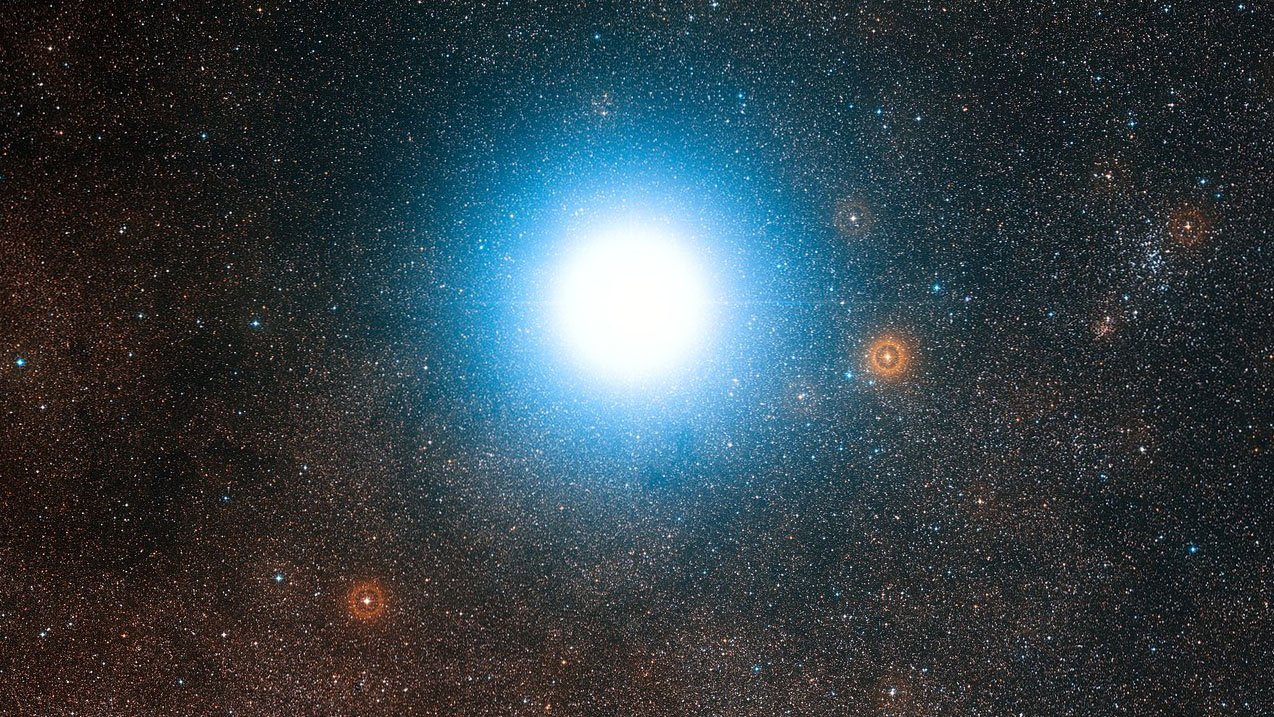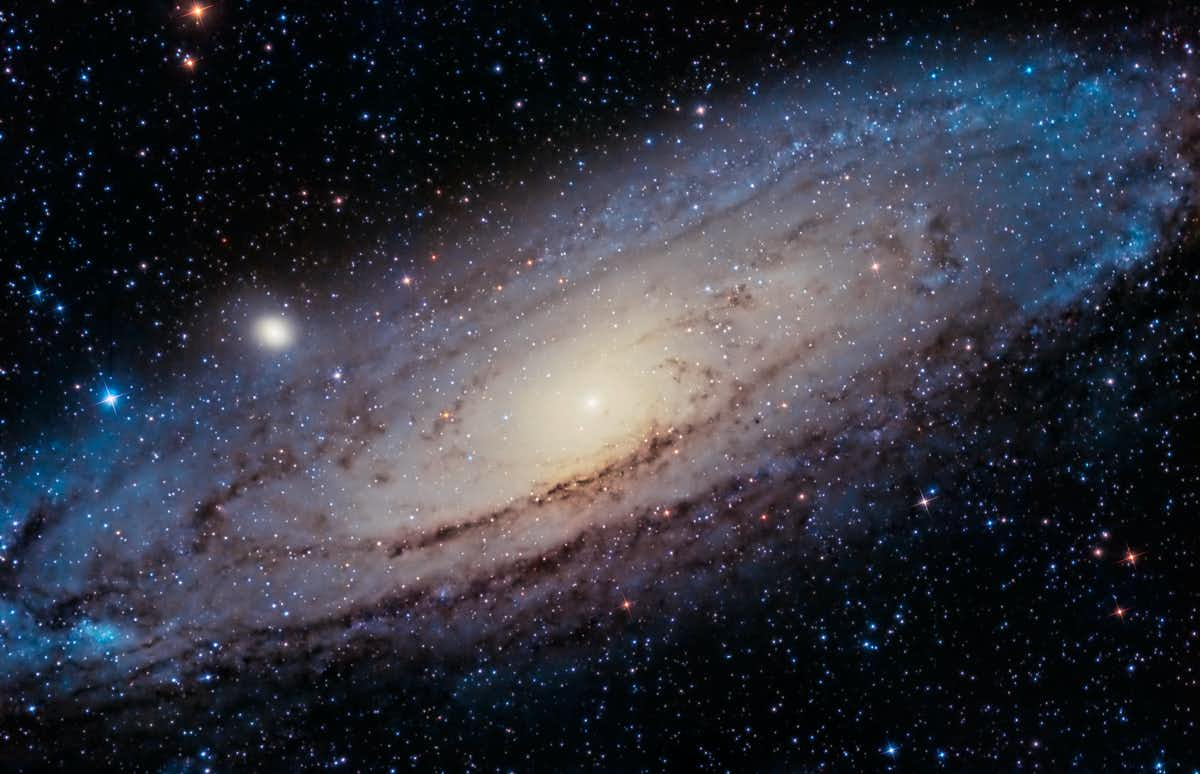Some celestial yardsticks are visible in the night sky
Here's where to look to see some key landmark stars.

One of the questions I am sometimes asked is, "How do astronomers know how far away a star or a distant galaxy happens to be from Earth?" In our sky this week, there are three stars that have been used to demonstrate how to measure stellar distances: Vega, 61 Cygni and Delta Cephei.
Step outside at around 8 p.m. local time as the sky is getting dark, look straight up above your head and you'll see Vega in the constellation of Lyra, the lyre, shining with a brilliant, bluish tinge. It's the second-brightest star of our current evening sky.
I should pause here to note that contrary to what was presented in the 1997 movie "Contact," the correct pronunciation of this particular star is Vee-ga and not Vay-ga (which was a subcompact automobile marketed by General Motors during the early 1970s).
Related: The brightest planets in the night sky: How to see them (and when)

While Vega is unmistakable, the same can't be said for our second star, 61 Cygni. Glowing at magnitude +5.2 in the adjacent constellation of Cygnus the swan, it's more than 100 times dimmer than Vega, so it must be located carefully.
Using a star chart, you can glimpse it under a dark sky with your unaided eye if you're free of any light pollution. But it's also a very pretty double star when seen through a small telescope.
Delta Cephei, meanwhile, is in the constellation of Cepheus the king, a star pattern that better resembles a church with a steeple. Delta is situated above the southeast (lower left) corner of the church.
Get the Space.com Newsletter
Breaking space news, the latest updates on rocket launches, skywatching events and more!

Measuring distance using displacement
Vega and 61 Cygni, along with the southern star Alpha Centauri, were the first three stars whose distances were successfully measured by the trigonometric parallax method in the late 1830s. You can demonstrate parallax for yourself: Hold your thumb out at arm's length and cover an object, such as a nearby streetlight. Close your left eye and move your thumb to cover the light using just your right eye.
Now close your right eye and open the left eye, and it will appear that your thumb has jumped to the right of the light. Similarly, we can measure the parallax of stars that are relatively near to Earth by taking measurements from various positions along Earth's orbit, then determining their distances using trigonometric functions. Earth's yearly orbital revolution causes each star to trace a tiny ellipse — its parallactic orbit — whose angular size and shape are those of Earth's orbit as it would appear from the star.
Wilhelm von Struve in Russia and Friedrich Bessel in eastern Prussia measured the parallaxes of both Vega and 61 Cygni, respectively, by meticulous visual observations. Struve used a filar micrometer — a specialized eyepiece used in astronomical telescopes for astrometry measurements — on a 9.6-inch (24 centimeters) refracting telescope; Bessel used a heliometer — a refracting telescope with a split objective lens, used for finding the angular distance between two stars.
As for Alpha Centauri, which is visible in the U.S. only from Hawaii and along the Gulf Coast, its parallax was determined by Thomas Henderson at the Cape of Good Hope in South Africa, using a mural circle, an antiquated type of modern meridian circles.
These first measurements of stellar distances were close to today's measurements of 25.0 light-years for Vega; 11.4 light-years for 61 Cygni; and 4.37 light-years for Vega. They were a major breakthrough, and observations such as these were made visually until about 1900. After that point, more highly refined photographic techniques were used, eventually leading to automatic plate-measuring engines linked to electronic computers.
More recently, from 1989 to 1993, astronomers relied on the the European Space Agency's (ESA) scientific satellite Hipparcos . The word "Hipparcos" is an acronym for HIgh Precision PARallax COllecting Satellite. It was the first satellite devoted to precision astrometry and provided accurate measurements of positions and parallaxes of stars, enabling better calculations of their distance and tangential velocity.

Delta Cephei: Stellar Rosetta stone
Once we go beyond 100 light-years or so, the stars' parallaxes become too small to get meaningful measurements. How, then, is it possible to find the distances of galaxies?
Delta Cephei served as astronomy's "Rosetta stone," providing a clue for how to solve this problem. John Goodricke, an English amateur astronomer, discovered in 1784 and 1785 that this star appeared to brighten and fade over a roughly five-day cycle. It was later discovered that other stars do this, and they became known as Cepheids. Today, over 400 Cepheids are known in the Milky Way and many more in nearby galaxies. Each is a star that pulsates with its own period of between one and about 100 days, the light changes repeating like clockwork.
The Cepheids have a very useful property: The longer the period, the greater each star's intrinsic (actual) luminosity is. From this, a period-luminosity curve can be constructed. So, if a Cepheid variable is detected in a distant galaxy, once its period can be determined we can determine the star's absolute magnitude from the curve. And by comparing the star's absolute magnitude with its apparent magnitude, we can accurately determine its distance, in much the same way that the distance of a lighthouse can be estimated from its known candlepower versus how bright it looks.
Two types of Cepheids
However, things later got confusing; it was deduced after the mid-1940s that there were actually two kinds of Cepheids. Those of Type I are about one-and-a-half times as bright as those of Type II, taken period for period. And until this was fully realized, all galaxy distances had initially been underestimated. In my personal astronomical library, I have a number of old books dating back to before 1950. In many of these books, the Andromeda galaxy was listed as being only 750,000 light-years away. This was later revised to 1.5 million light-years, but we now know it to be at a distance of just over 2.5 million light-years.

See it yourself
The prototype — the star that made all these advances possible — is an interesting object for you to monitor on a night-to-night basis. In the Church-like star pattern of Cepheus, we can find Delta Cephei marking the acute angle of an easily spotted triangle of stars, the other two corners being Zeta Cephei (magnitude +3.4) and Epsilon Cephei (+4.2).
When Delta is at maximum light, it is very similar to Zeta in brightness; at minimum, it is about half as bright and is a good match for Epsilon.
So, if you watch Delta Cephei on consecutive nights for about a week, you can see the five-day cycle of its rapid brightening and slower decline. Binoculars will be beneficial in watching the rise and fall of brightness. The average pulsation period is five days, eight hours and 47 minutes.
Joe Rao serves as an instructor and guest lecturer at New York's Hayden Planetarium. He writes about astronomy for Natural History magazine, the Farmers' Almanac and other publications. Follow us on Twitter @Spacedotcom and on Facebook.
Join our Space Forums to keep talking space on the latest missions, night sky and more! And if you have a news tip, correction or comment, let us know at: community@space.com.

Joe Rao is Space.com's skywatching columnist, as well as a veteran meteorologist and eclipse chaser who also serves as an instructor and guest lecturer at New York's Hayden Planetarium. He writes about astronomy for Natural History magazine, Sky & Telescope and other publications. Joe is an 8-time Emmy-nominated meteorologist who served the Putnam Valley region of New York for over 21 years. You can find him on Twitter and YouTube tracking lunar and solar eclipses, meteor showers and more. To find out Joe's latest project, visit him on Twitter.









